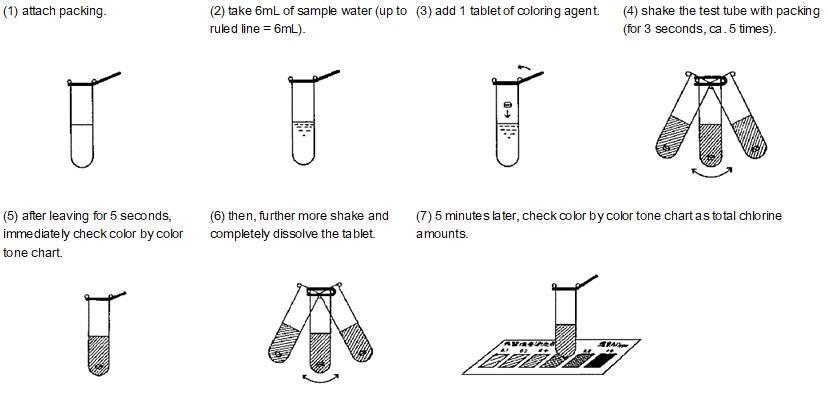Analysis Kit for Wastewater Control
Simple analysis kits that can measure cyan, active chlorine, and phenol respectively are available as part of the "Test Wako series". There are two types of active chlorine measurements, one is the DPD (N,N-diethyl-p-phenylenediamine sulfate) method and the other is the ABTS (2,2'-azinobis(3-ethylbenzothiazoline-6-sulfonic acid)) method.
Line up
- For Active Chlorine - Test Wako : A kit for measuring residual active chlorine using ABTS as a coloring agent.
The procedure is simple and the color reaction speed between free chlorine and bound chlorine is largely different, so it can be accurately measured in the same test tube.
- For Active Chlorine - DPD Test Wako : Residual chlorine measurement kit using DPD.
Since DPD is tablet, weighing is not necessary and can be used conveniently.
- For Cyan - Test Wako : Cyan ion measurement kit utilizing the color reaction of o-tolidine hydrochloride.
Semi-quantification is possible even when the free cyanide concentration is 1 ppm or less, and complex procedure for preparation of testing reagents is unnecessary.
- For Phenol - Test Wako : 4-Aminoantipyrine method for phenol measurement kit.
Enable to quick and accurate measurement.
Procedure
Active Chlorine - Test Wako

Notes
- When free chlorine is measured, it will also react with bound chlorine if the standing time becomes longer, so please add coloring within 10 seconds after adding tablets. In this case, even if the coloring reagent tablet is not completely dissolved, the measured value is not affected.
- Please verify with the color tone chart under bright natural light.
- Please use clean test tubes that have been thoroughly cleaned.
References
- S. Hunig. et al.:Ann., 676, 36 (1964)
- H. Lang et al.:Z. Analyt. Chem., 201, 321 (1964)
Active Chlorine - DPD Test Wako

Product List
- Open All
- Close All
For research use or further manufacturing use only. Not for use in diagnostic procedures.
Product content may differ from the actual image due to minor specification changes etc.
If the revision of product standards and packaging standards has been made, there is a case where the actual product specifications and images are different.



